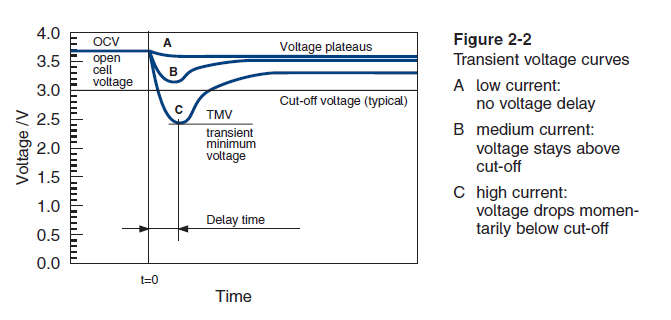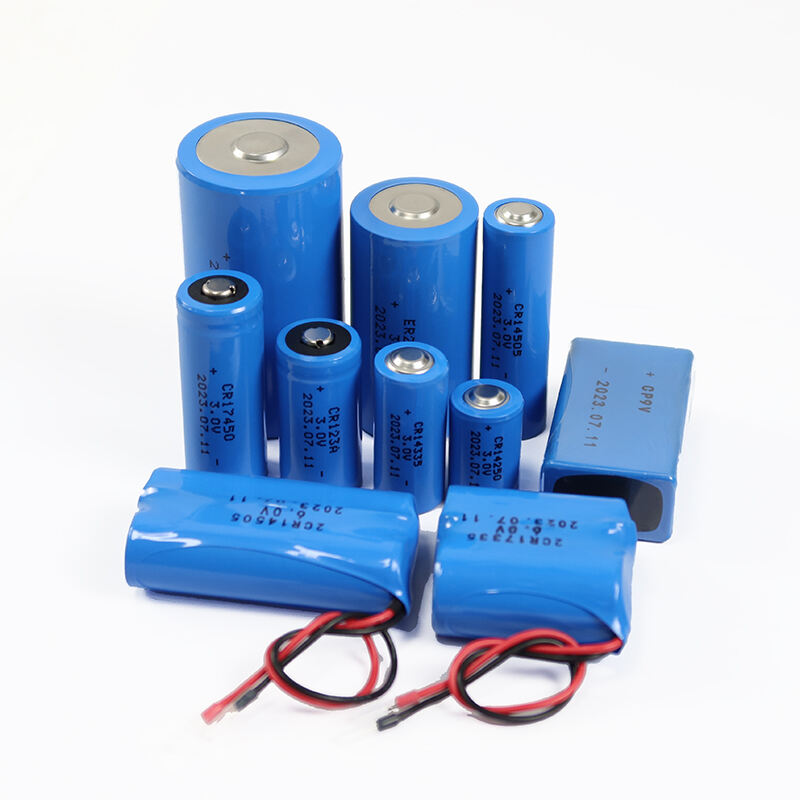Nieuws
Instructies en voorzorgsmaatregelen voor het gebruik van lithiumthionylchloridebatterijen
Lithiumbatterijen met een modelnummer dat begint met ER zijn lithiumthionylchloride (Li/SOCl2) batterijen, die volgens internationale batterijnormen worden geclassificeerd als lithium primaire batterijen. Lithium primaire batterijen zijn een nieuw type hoogenergetische en milieuvriendelijke batterij met lithiummetaal als negatieve elektrode. Het zijn niet-oplaadbare batterijen.
1. Lithium-primaire batterijen zijn niet oplaadbaar
Het direct opladen van lithium primaire batterijen zal ervoor zorgen dat de batterij explodeert. De kans op een batterij-explosie is direct gerelateerd aan de laadtijd en stroom. 220V-opladen zal direct exploderen. 12V DC-opladen, de batterij zal binnen een paar minuten exploderen. 5V DC-opladen zonder externe beschermingscomponenten kan een laadstroom van ongeveer 50mA bereiken, en de batterij zal na een paar uur exploderen.
In het geval van een zwevende lading van 5 V in het circuit, wordt aanbevolen dat klanten diodes en andere beschermingsmaatregelen in het circuit toevoegen om de laadstroom onder de 10 µA te houden.
Het is veilig om de laadstroom van lithium-ionbatterijen onder de 10 µA te regelen.
2. Voorkom gedwongen ontlading
Wanneer meerdere batterijen in serie worden gebruikt, en andere modellen of gebruikte batterijen in de seriebatterij worden gebruikt, zullen sommige batterijen gedwongen ontladen (overontlading). Vanwege de ongelijkmatigheid van de batterijcapaciteit zullen sommige batterijen in de latere fase van ontlading opladen, wat batterijongelukken kan veroorzaken.
Om te voorkomen dat de batterijen opgeladen worden, wordt klanten aangeraden om de batterijen niet zelf te monteren voor gebruik.
Als u één enkele batterij in combinatie wilt gebruiken, neem dan contact op met de technici. Zij kunnen u assemblageoplossingen en assemblageontwerpdiensten aanbieden.
3. Hoge temperatuur
Wanneer de omgevingstemperatuur van de lithium-ionbatterij hoger is dan 100°C, zal de batterij exploderen. Daarom moet u tijdens het lassen goed op de lastijd en -temperatuur letten.
4. Hysterese en aandachtspunten
Bijvoorbeeld lithium-thionylchloridebatterijen hebben een kenmerk, namelijk spanningshysterese, waardoor klanten de batterij vaak gebruiken om hoge stroom te leveren, en de belastingsspanning lager is dan de minimale limietspanning van de klant, waardoor de apparatuur slecht werkt. Gezien het feit dat veel klanten dit onderschatten, is het noodzakelijk dat we de hystereseprestaties van de batterij gedetailleerd uitleggen.

Klasse A: Onder lage stroomcondities, hoewel de batterij gepassiveerd is, zal de belasting niet significant veranderen tijdens gebruik. Als we ER14250 als voorbeeld nemen, zal de batterij geen duidelijke hysterese (spanningsreductie) hebben wanneer de stroom lager is dan 1 mA.
Categorie B: Onder gemiddelde stroomomstandigheden, als de batterij gepassiveerd is, maar de batterijbelasting nog steeds boven de uitschakelspanning kan worden gehandhaafd.
Als we de ER14250-batterij als voorbeeld nemen, zal de spanning van de gepassiveerde batterij dalen wanneer de stroom lager is dan 4 mA. Over het algemeen zal deze echter niet lager worden dan 2,8 V.
Categorie C: Onder hoge stroomomstandigheden kan de batterijbelasting, als de batterij gepassiveerd is, gemakkelijk onder de cut-off-spanning dalen, waardoor het apparaat niet goed meer werkt. Als we de ER14250-batterij als voorbeeld nemen, zal de belasting, als de stroom meer dan 10 mA bereikt, onder de cut-off-spanning (Cut-offVoltage) dalen.
Daarom moeten klanten het hysteresefenomeen volledig begrijpen en de bijbehorende maatregelen nemen om de impact van hysterese te verminderen. De volgende suggesties worden gedaan tijdens het daadwerkelijke gebruik:
1. Houd in de ontwerpfase rekening met de omvang van de belasting, de gebruiksomgeving en andere factoren en selecteer een batterijmodel voor gebruik onder gemiddelde of lage stroomsterktes.
2. De voltooide batterij-inventaristijd mag niet langer dan een half jaar duren. Het wordt aanbevolen om de batterij na meer dan een half jaar te activeren.
3. Als de batterij op het apparaat is geïnstalleerd en een micro-ampère stroomverbruik heeft, wordt het passiveringsverschijnsel van de batterij vertraagd. Als de ontwerpstroom echter groter is dan de maximale bedrijfsstroom van de batterij, wordt aanbevolen om te overwegen om condensatoren toe te voegen tijdens de ontwerpfase om de spanningsval van de batterij te verminderen.

V. Voorzorgsmaatregelen tijdens gebruik
1. Kortsluiting is ten strengste verboden en opladen met hoge stroomsterkte is ten strengste verboden.
2. Het is gebruikers ten strengste verboden om batterijen afzonderlijk te combineren.
3. Het overmatig ontladen, uitknijpen en verbranden van batterijen is ten strengste verboden.
4. Langdurig gebruik of verhitting buiten het toegestane temperatuurbereik is ten strengste verboden (batterijen brengen veiligheidsrisico's met zich mee bij temperaturen boven 100°C).
5. Controleer de buitenverpakking strikt voor gebruik. Als de verpakking beschadigd is, zoek dan de oorzaak en gebruik deze niet zomaar. Wanneer de verpakte batterijen verspreid zijn, sorteer ze dan op tijd, sluit de verspreide batterijen af en waarschuw de leverancier.
6. Het is ten strengste verboden om batterijen van verschillende series en met verschillende specificaties in serie te gebruiken.
7. Er mag niet naar believen worden gesoldeerd aan de bovenkant van de positieve en negatieve polen van de batterij. Het solderen op het uitloopblad moet binnen 5 seconden worden voltooid.
8. Tijdens het gebruik mag de batterij niet worden verspreid of vallen, om kortsluiting te voorkomen.
9. Nadat de batterij is ontladen tot de eindspanning, is het ten strengste verboden om deze verder te gebruiken. De batterij mag ook niet in water worden gedompeld.
10. Gebruikte batterijen moeten tijdig worden gemarkeerd en afgedankt. Ze mogen niet zomaar worden opgeslagen.
11. Strip bij het strippen en lassen van draden niet de positieve en negatieve draden tegelijkertijd en verbind de positieve en negatieve draden niet met metalen voorwerpen om kortsluiting in de batterij te voorkomen.
12. Bij het verpakken en opslaan van overtollige batterijen van de productielijn moeten de batterijen in de originele verpakking worden verpakt, netjes worden gerangschikt en niet met elkaar worden kortgesloten.
13. Overtollige batterijen van de productielijn dienen in de originele verpakking te worden bewaard. Het wordt aanbevolen om de batterij op te slaan in een omgeving met een temperatuur van <25 graden en een luchtvochtigheid van <70% om langdurige opslag in zware omstandigheden te voorkomen, wat roest en corrosie van de batterij en lekkage kan veroorzaken.
14. Vereisten voor batterij-installatie en -gebruik: De positieve pool van de batterijcel moet horizontaal en omhoog worden geplaatst. Wanneer de positieve pool omlaag is, zal een deel van de capaciteit onbruikbaar zijn en is de werkelijke benuttingsgraad slechts ongeveer 80% van de normale waarde.
15. Houd de batterij buiten bereik van kinderen om letsel te voorkomen.
16. Afgedankte batterijen kunnen niet op zichzelf worden vernietigd en moeten worden verwerkt in overeenstemming met de voorschriften van de plaatselijke milieudienst.
Hierboven staan de voorzorgsmaatregelen voor het gebruik en de werking van lithium-accu's, die hieronder worden toegelicht.


